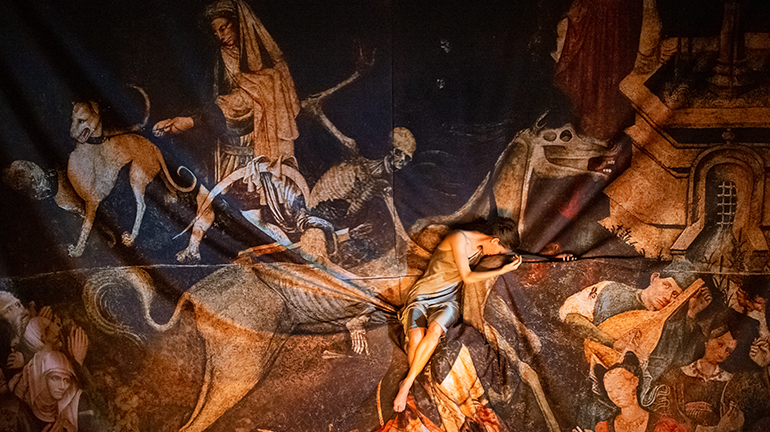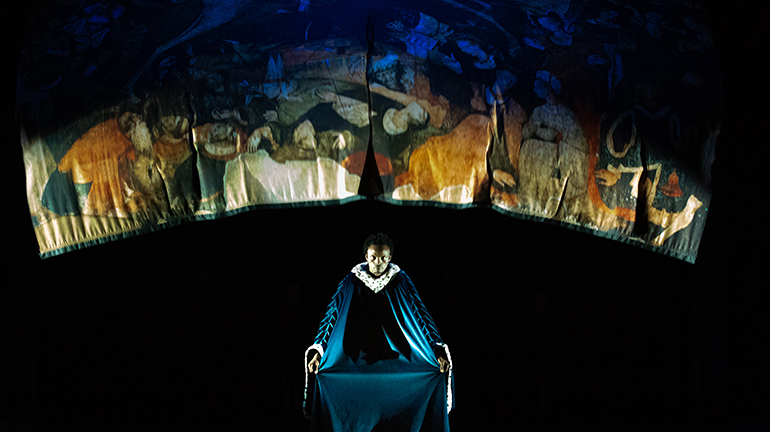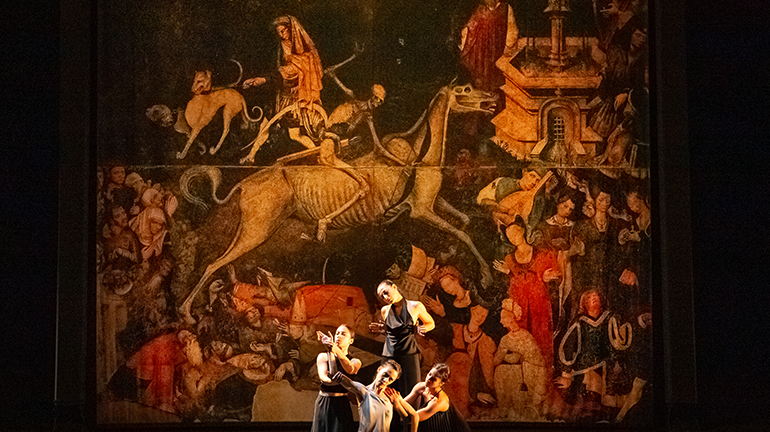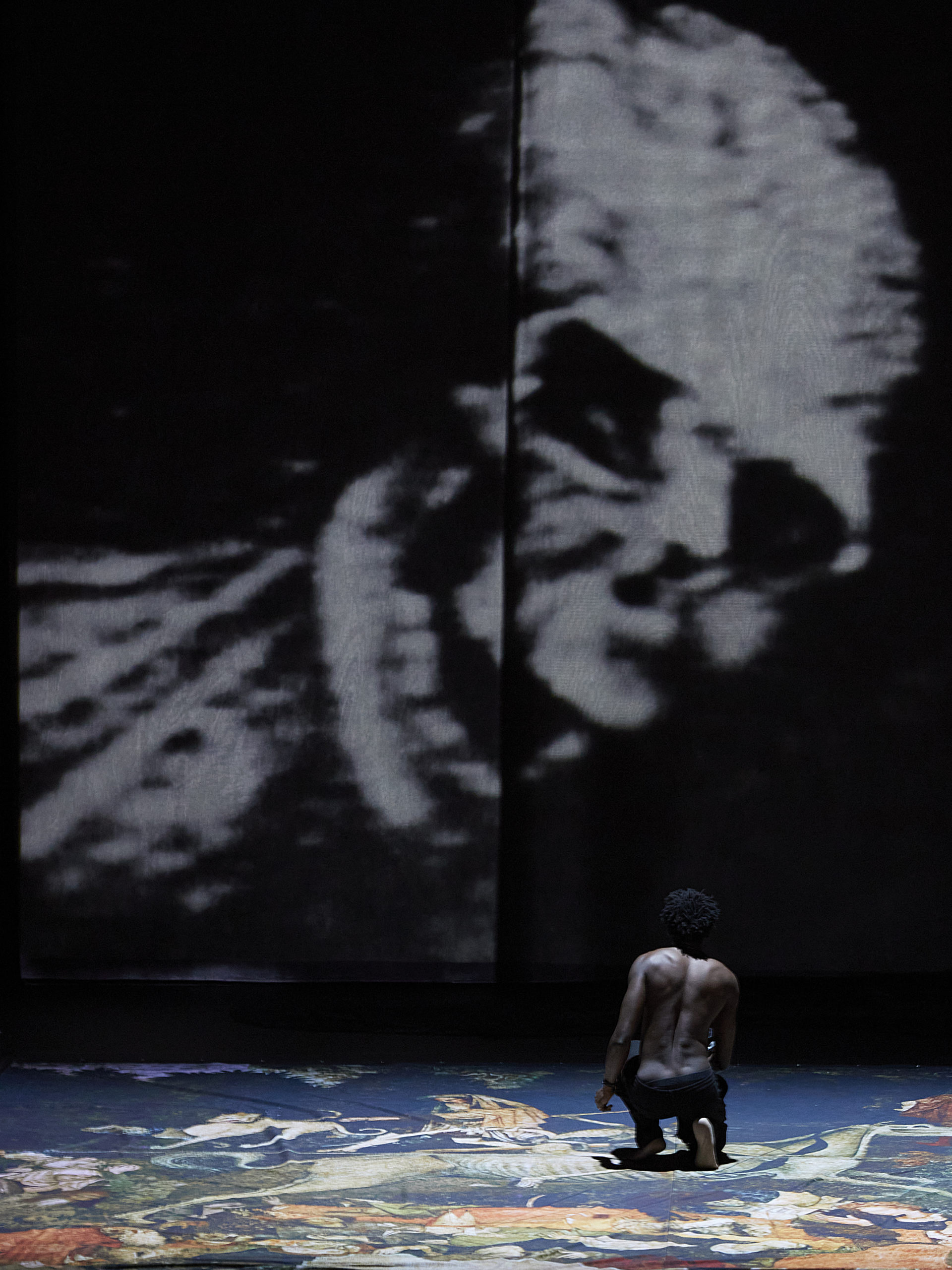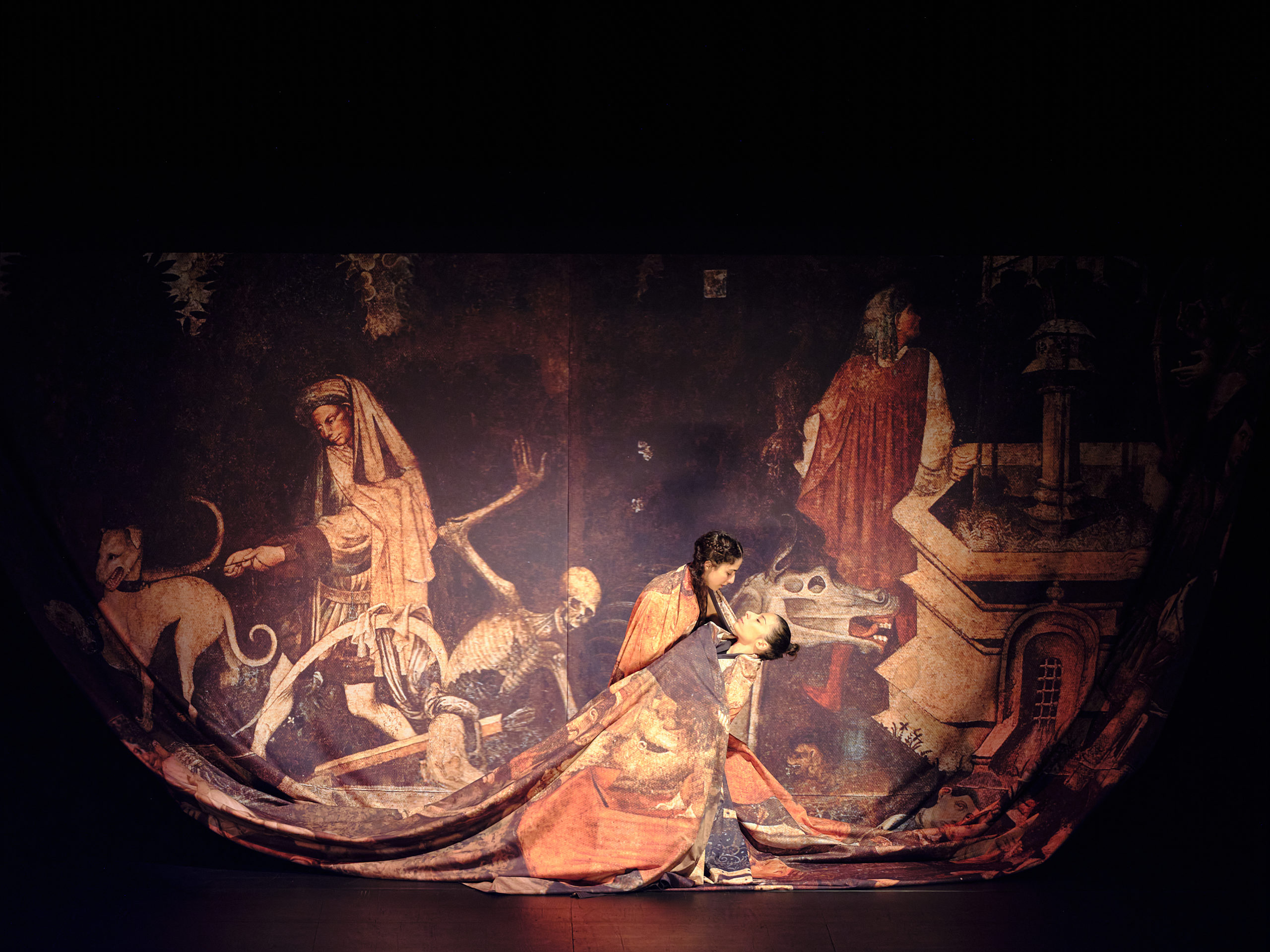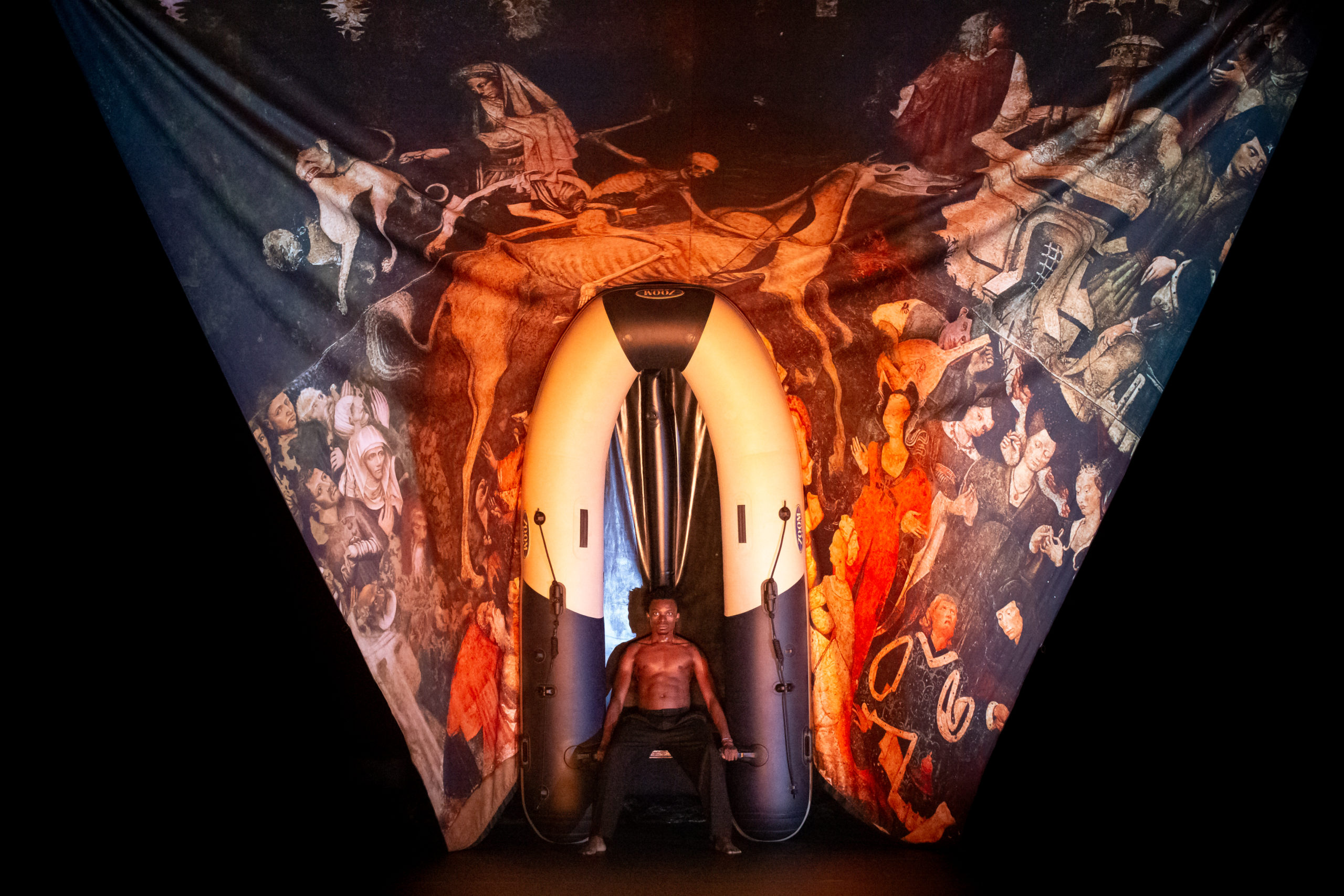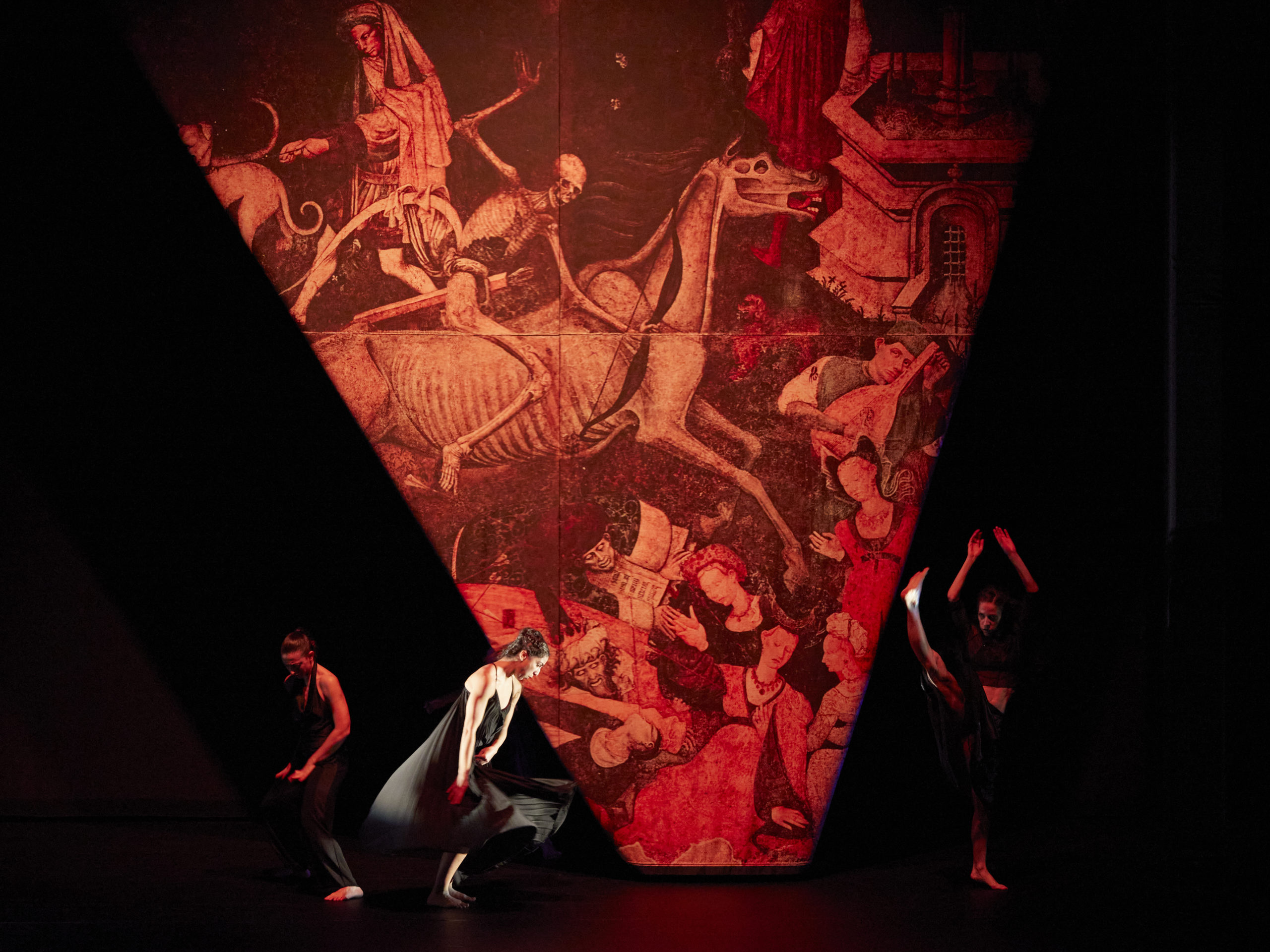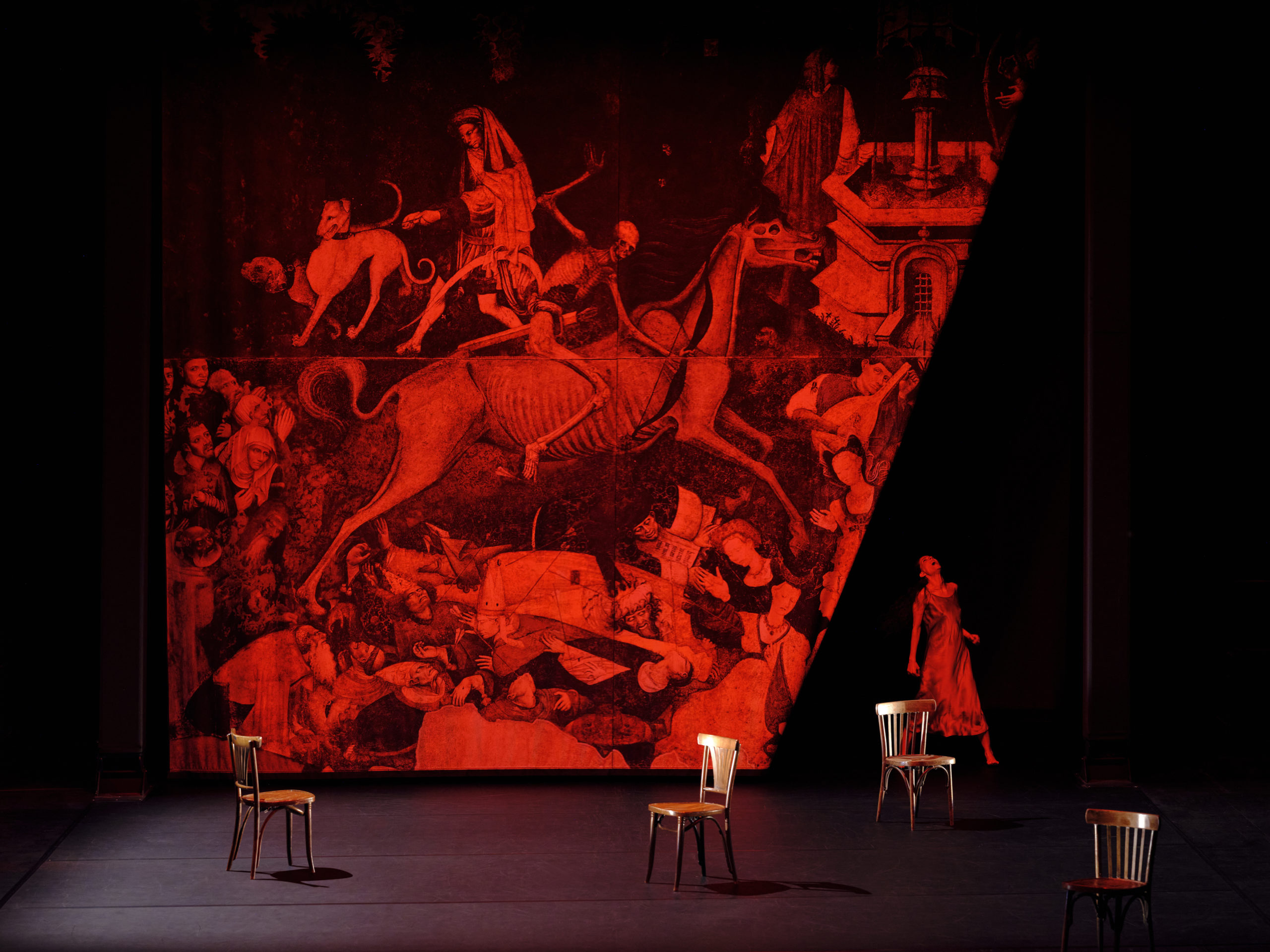de page
invisibili
An Open Port - Invitation to Aurelien Bory
There is a theatre on an island in the Mediterranean, more specifically, on an island which is bathed in world history as no other. The sea seems like a continent in itself. Sadly, it has become the silent stage of unacceptable tragedies. That theatre cannot distance itself from its identity, its artistic identity,when it establishes its programming. Palermo is a name of Arabic origin which means “open port”. Today it can still pride itself on the tradition of hospitality and tolerance which is part of the DNA of the city. Similarly, our research will be centered around cultural opportunities and the cross breeding of different traditions.
Aurélien Bory is a choreographer and theatre director who navigates through all the above-mentioned areas with a sense of poetry and grace and who knows how to weave together the essence of multiple worlds.
Pamela Villoresi –Teatro Biondo, Palermo, dec.2020
Il Porto Aperto - Invito a Aurelien Bory
INVITO A AURÉLIEN BORY
Un teatro che è in un’isola del Mediterraneo, anzi: nell’isola che è l’ombelico del bacino più ricco di storia del mondo, un mare che è un continente a sé e che è ahimè divenuto palcoscenico silente di intollerabili tragedie, non può -nella scelta dei suoi programmi- prescindere dalla sua identità. Palermo è un nome che viene dall’arabo e che significa Porto Aperto. Ancora oggi può vantare accoglienza e tolleranza, è nel suo dna. Dunque la nostra ricerca si muove verso le aperture culturali e le contaminazioni artistiche.
Aurélien Bory è un coreografo-regista che sa muoversi su tutti questi piani con estrema grazia e poesia, che sa fondersi e immedesimarsi con le problematiche e i linguaggi del mondo e del suo tempo.
Il nostro sarà uno spettacolo multidisciplinare che parlerà di migrazioni, di movimenti, di assimilazioni, di fatiche, di scoperte; e coinvolgerà artisti di diverse discipline e diverse razze, anzi, diverse culture e provenienze. Di razze ce n’è sola: quella umana.
Pamela Villoresi –Teatro Biondo, Palermo, dicembre 2020
PROGETTO PALERMO
Un progetto nasce sempre per necessità. « Se non c’é necessità, non c’é nulla o quasi » diceva Gilles Deleuze. Non ci si sveglia un mattino con un’idea, essa nasce sempre per necessità. E spesso, l’idea che ne resulta ha allora qualcosa d’improbabile. L’inaspettato rimane per me uno dei migliori auspici per i miei progetti di creazione, poiché le idee, come gli incontri, non si decretano. Si presentano a noi, e coincidono. É ciò che é successo a Palermo.
Quando Pamela Villoresi, direttrice del Teatro Biondo, m’invita a Palermo, ho in mente la storia della Sicilia segnata da influenze multiple, visibili tutt’oggi in ogni strada, ogni piazza, ogni edificio della città. La Sicilia é situata al centro di un continente d’acqua, attraversato da secoli di culture e civilizzazioni. Palermo é un punto di convergenza. Fenici, greci, ostrogoti, bizantini, mori, berberi, arabi, spagnoli, italiani… Fin dall’antichità « l’isola del sole » dell’Iliade ha attirato a sé da orizzonti lontani. Sono altre le odissee oggi, con il viaggio dei migranti arrivati a Palermo e resi cittadini d’onore dal sindaco Leoluca Orlando, a contro-corrente rispetto alla politica italiana e europea. Quando un giornalista gli chiede quanti stranieri ci sono a Palermo, risponde : « Nessuno, qui ci sono soltanto palermitani ».
Palermo si é strutturata e si struttura oggigiorno ancora attraverso questi movimenti. É lo stesso processo in atto nella creazione. Non c’é arte senza movimento, senza alterità, senza spostamenti laterali. Non é il centro che m’inspira nel mio lavoro, ma la periferia, dove in ogni punto si incrocia la possibilità di una tangente. Penso allo spettacolo Palermo Palermo, é già Leoluca Orlando che accoglie Pina Bauch nel 1989, convinto che gli artisti e i poeti possono aprire nuove strade. Ho visto questo spettacolo a Parigi. Le opere che ci colpiscono sono come gli incontri, ci transformano per sempre. Arrivando a Palermo, ho in mente quel muro di cemento che crolla all’inizio dello spettacolo e quella donna che si fa strada tra i detriti.
Per questa creazione vado a raggiungere Pamela, Leoluca e divento palermitano. Vado a creare con altri palermitani, arrivati d’Oriente, d’Africa o d’Europa. Palermo, di cui Dante diceva che accoglie i poeti, sarà il nostro Paradiso. Un luogo come un rimedio salutare, dove l’arte puo` essere condivisa,
come si construisce un legame segreto. Ci sarà della danza, dei canti, del circo, delle marionette, poiché quest’arte perdura in Sicilia, e naturalmente, dei poeti. Pamela Villoresi, che ha fatto numerosi spettacoli con Giorgio Strehler, mi ha detto che gli piaceva citare questa frase di Louis
Jouvet : « Soltanto i poeti soltanto i poeti restano ».
hanno una vocazione,
Toulouse, ottobre 2020
statement of intent
APPUNTI DEL REGISTA
The Teatro Biondo has a wall. As in all theatres, I look at the back walls. I find them endlessly interesting, because from the Greek skene – the stretched canvas in front of which actors perform – to the stages of Italian theatres, there is the same invention: hiding reality – making it invisible – so that it can then be represented. In Biondo, the wall of Palermo Palermo has left its mark, just as history has left its mark on the walls of Palermo. But it was another wall that finally caught my attention.
The Triumph of Death is a 15th-century mural fresco painted for the city’s first hospice for the poor, which was moved and is now housed in the Palazzo Abatellis, although its author is unknown. Over the ages, it has become the very symbol of Palermo, both in terms of its content and the mystery surrounding its creation. Numerous historians and artists have examined this work, a pivotal point between the High Gothic and Renaissance periods, which is astonishingly modern, not only for its highly thought-out narrative and structure, but also for the striking fact that the painter and his assistant depicted themselves on the side of the fresco, looking at the spectator, a first in the history of painting. In 1433, Jan Van Eyck produced the first known self-portrait in history, the Portrait of a Man in a Turban, and ten years later in Palermo, a painter stood right in the middle of his fresco with his disciple, the only figures looking at the viewers, creating a striking mise en abyme. So it’s not just about death, the impressive, laughing skeleton on its emaciated horse, striking its arrows at will and almost at random, amidst a multitude of bodies; it’s above all about its representation. Isn’t the painter trying to remind us that art would not exist without the awareness of death? And that we use representations to speak of what will forever be unknown to us? In The Triumph of Death, conceived in the manner of a tapestry, in other words, of a setting or of a world, the painter and his gaze confront us with questions about art and its function. Because beyond this lively dance of colours, this spiralling chaos with its multiple references, this perceptible humour, the fresco offers consolation. Everyone dies, from the most pious to the most powerful, nothing resists death, because if there were no death, there would be no life.
For invisibili, I designed a backdrop reproducing the Triumph of Death at scale one: six metres by six, the dimensions of a theatre. The fresco was painted during the Black Death, the scourge of history that plagued Palermo for four centuries. And for invisibili I set the fresco in today’s context, hiding recent recurring scourges, including the deaths of migrants, cancer and natural disasters.
On the canvas, alongside the two painters, artists are represented: musicians and dancing women. These are precisely the artists I first met in Palermo. The first was Gianni Gebbia, a saxophonist with an international career who has worked on stage with many great artists, including Heiner Goebbels. Then Chris Obehi, a Nigerian singer who started his new life in Palermo singing in Sicilian. And finally, the dancers I wanted to see as Pina Bausch’s daughters: Valeria Zampardi, Blanca Lo Verde, Maria Stella Pitaresi, Arabella Scalisi. With them, the fresco in the centre of the theatre comes to life and their dancing takes it to another dimension. For these artists, it is a vertiginous stage score, a set of invisible scenes that can be played out, if one looks at them once more, before the fresco crumbles and disappears forever.
Aurélien Bory,
October 2023
APPUNTI DEL REGISTA
Il teatro è un dispositivo di visiblità. Spettatori della stessa scena in un dato momento, non vediamo le stesse cose. Ciò che percepiamo, a livello individuale, rimane spesso invisibile per gli altri. Il teatro ci rivela forse i legami tra ciò che vediamo e noi stessi, quegli legami invisibili che sottendono le nostre credenze e i nostri dubbi, le nostre emozioni ed i nostri prensieri?
Il primo giorno a Palermo sono andato a vedere l’Annunciata di Palermo del grande pittore Antonello da Messina. Un’annunciazione la cui singolarità scaturisce precisamente dal suo rapporto con l’invisibile. L’arcangelo Gabriele non è rappresentato, contrariamente all’iconografia in uso nelle Annunciazioni fino a quel momento. Si vede semplicemente il volto di Maria che lo guarda. L’artista non può rappresentare l’invisibile, lo colloca allora al di fuori del dipinto e in questo volto turbato – una giovane donna che viene a sapere che aspetta un figlio – ci mostra i segni visibili dell’invisibile.
Entrando nel Teatro Biondo, ho pensato a Pina Bausch, a Palermo Palermo, alla caduta del muro, premonitrice. Le tracce sono ancora visibili: i rinforzi sotto il palcoscenico per sostenere l’urto dei blocchi di cemento, il tavolato riparato o rappezzato qua e là. Mi è venuta voglia di lavorare su questo palcoscenico con dei danzatori, anzi più esattamente con delle danzatrici, per ripercorrere le orme di Palermo Palermo, che per me è uno spettacolo assoluto. Di considerare le danzatrici di Palermo che ho incontrato — Valeria, Blanca, Maria Stella e Arabella — un po’ come le figlie e le nipoti di questo spettacolo, motivate o influenzate dalle sue figure, anche se non l’hanno mai visto, e che rimane per loro invisibile.
A Palermo, l’invisibile risiede nelle tracce sui muri, nelle strade, ma anche nei canti e nei gesti tradizionali degli artisti che incontro. Da dove vengono? La storia di Palermo è attraversata da importanti sconvolgimenti, da cambiamenti di paradigma provocati da capovolgimenti successivi le cui tracce finiscono tutte col confondersi. Nel cuore del Mediterraneo, tra Africa e Europa, Palermo è al crocevia di miti antichi e racconti moderni. Come l’Opera dei Pupi: in che modo una canzone di gesta francese si è trasformata in un’arte popolare siciliana? O come la storia di Chris Obehi, musicista nigeriano, che a 17 anni ha attraversato il mare su un’imbarcazione di fortuna dalla Libia e che ora mixa a Palermo Afrobeat e canzoni in siciliano.
E ancora, come l’incontro al Biondo con Gianni Gebbia, sassofonista palermitano, che ha solcato il mondo in lungo e in largo con la sua musica, incrociando il percorso di grandi musicisti, o di registi come Heiner Goebbels. Anche lui mi racconta Palermo Palermo, ma dall’interno. Ha accompagnato Pina Bausch attraverso la città durante tutta la creazione dello spettacolo, e il suo cane é intervenuto in scena. Gianni mi mostrerà più tardi una fotografia dell’interno di un violoncello, uno spazio invisibile, come un’architettura o una scenografia.
Intravedo allora la possibilità di uno spettacolo che possa rivelare questi spazi invisibili. Partendo dal dipinto di Antonello da Messina, senza alcuna immagine preregistrata, ricorro ad un dispositivo video, telecamera e proiettore, che “entra” in una riproduzione della tela sul palcoescenico e che rivela attraverso una serie di ingrandimenti spazi insospettati. Gli stessi ingrandimenti video saranno utilizzati con l’Opera dei Pupi, le cui marionette, manipolate dagli interpreti, saranno alla loro stessa effigie e racconteranno il loro stesso ruolo. Immagino una telecamera che entri anche nel sassofono di Gianni Gebbia, e che riveli, nel padiglione e nel corpo dello strumento, spazi curvi, e luci boreali.
L’idea è di rivelare attraverso questo dispositivo gli spazi invisibili del palcoscenico e proiettarli su una tela di fondo – come sulla Skene greca che fonda lo spazio del teatro – per delineare un ritratto dei protagonisti in diretta, tessendo allo stesso tempo i legami invisibili delle loro storie che si incrociano. Tra la vita di una giovane donna che vuole diventare danzatrice ma rimane incinta, di un giovane nigeriano che impara la musica a Palermo, di una madre che alleva da sola le proprie figlie, di un musicista che incarna il ruolo di custode di un museo… E di tre danzatrici che fanno un’audizione per uno spettacolo che non vedrà mai la luce, la cui prima sarà eternamente rimandata.
La parola teatro indica il luogo in cui si guarda. Invisibili tenta di proporre a Palermo un altro punto di vista: filmando lateralmente, girare la testa e confrontarsi al fuori campo, esattamente dove non si guarda mai. È possibile immaginare il teatro ad angolo retto, attraverso uno sguardo obliquo, come una danza con l’invisibile?
Aurélien Bory, febbriao 2023
DISTRIBUTION
Blanca Lo Verde
Maria Stella Pitarresi
Arabella Scalisi
Valeria Zampardi
Chris Obehi
Gianni Gebbia
Design, scenography and direction Aurélien Bory
Artistic collaboration, Costumes Manuela Agnesini
Technical and artistic collaboration Stéphane Chipeaux-Dardé
Music Gianni Gebbia, Joan Cambon
Additional music Arvö Part “Pari Intervallo” (transcription Olivier Seiwert), Léonard
Cohen “Hallelujah”, J.S. Bach “Gigue, 2ième suite for Violoncelle”
Lighting design Arno Veyrat
Set design, stage machinery and props Hadrien Albouy, Stéphane Chipeaux-Dardé, Pierre
Dequivre, Thomas Dupeyron, Mickaël Godbille
General stage management Thomas Dupeyron
Stage management Mickaël Godbille, Thomas Dupeyron
Sound management Stéphane Ley
Lighting management François Dareys ou Arno Veyrat
Production director Marie Reculon
Administrator Aurélie Magnat
Press Agence Plan Bey
Production Compagnie 111 – Aurélien Bory / Teatro Biondo di Palermo
Co-production Théâtre de la Ville – Paris, ThéâtredelaCité – CDN Toulouse Occitanie, La
Coursive – Scène nationale de La Rochelle, Agora Pôle National Cirque Boulazac Aquitaine, Le
Parvis – Scène nationale Tarbes Pyrénées, Les Théâtres de la Ville de Luxembourg, La Maison
de la Danse, Lyon – Pôle européen de création, Fondazione Teatro Piemonte Europa – Teatro
Astra, Turin.
With the support of Convention 2023 Institut Français / Mairie de Toulouse
Hosting for rehearsals and residency Théâtre de la Digue – Toulouse, Teatro Biondo di
Palermo (IT)



